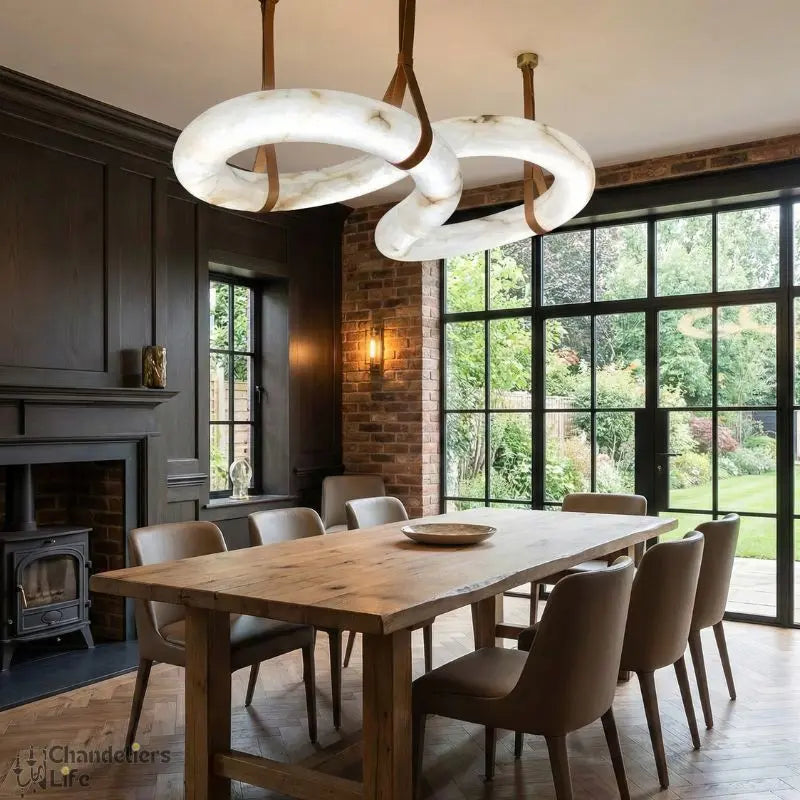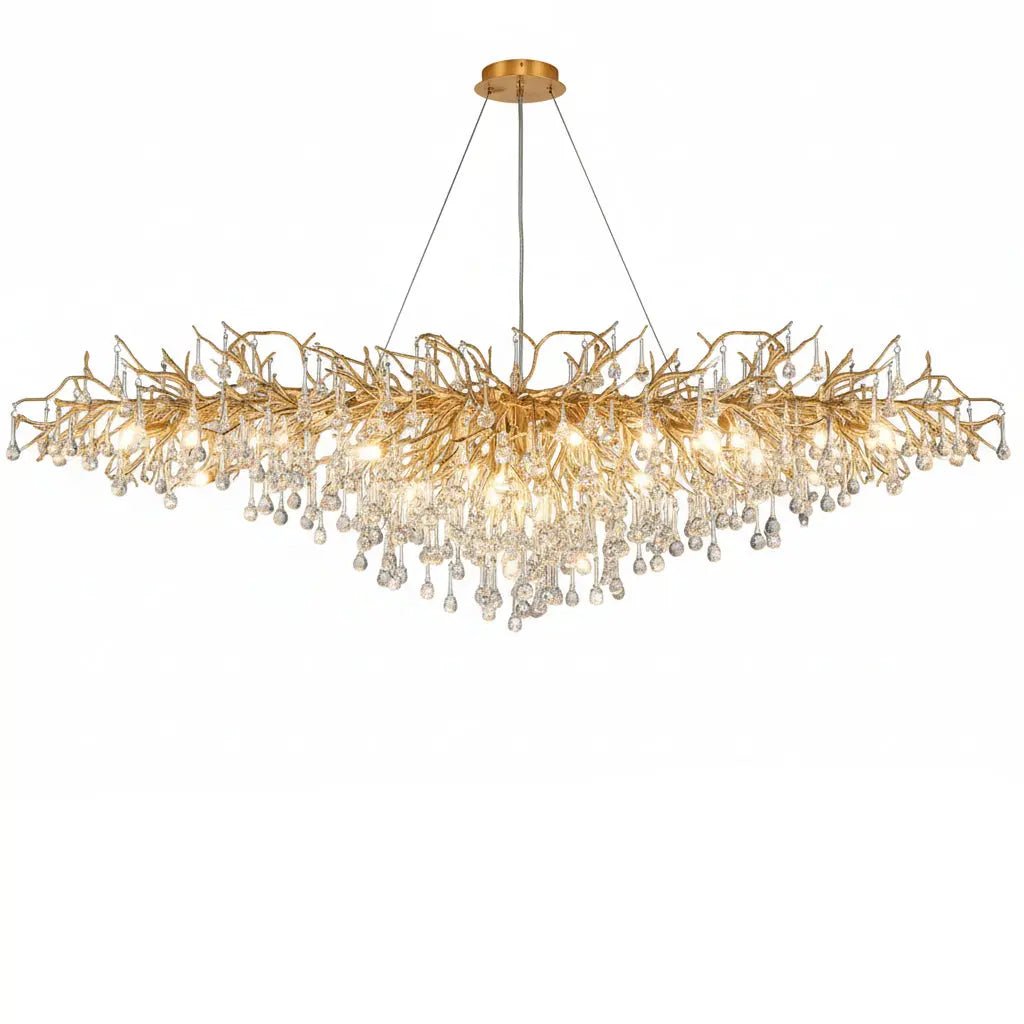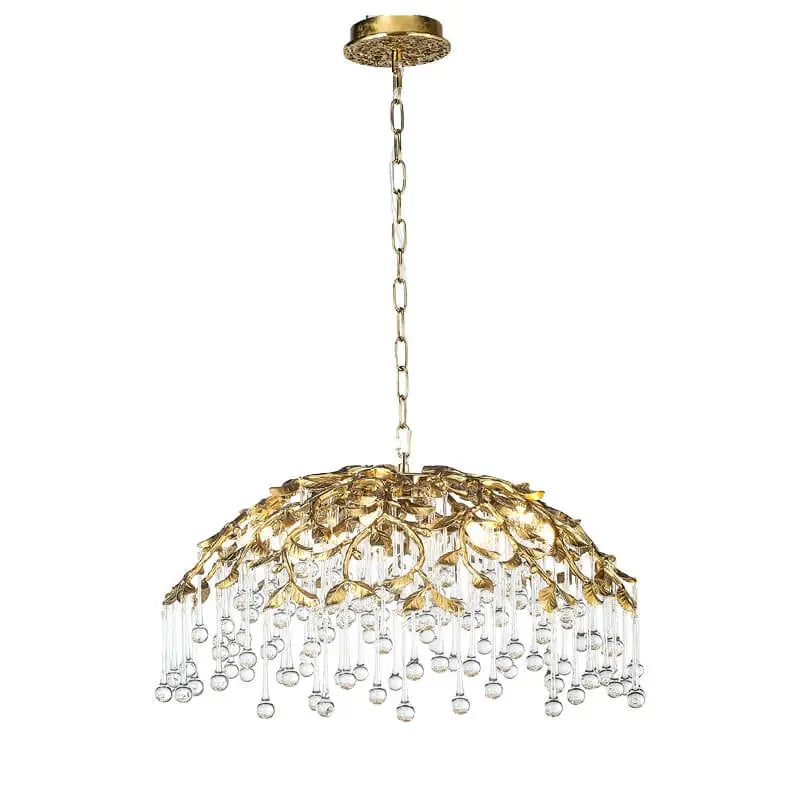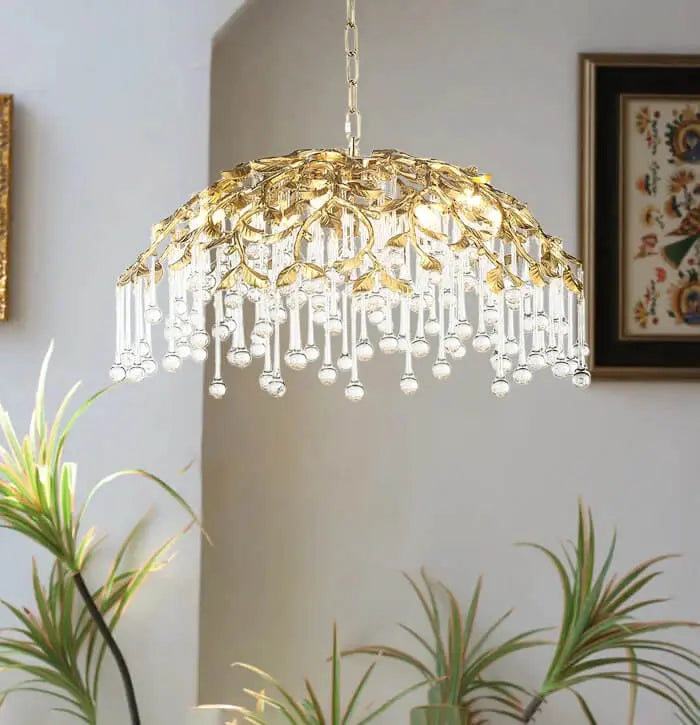Pendant lights are a popular choice for lighting up spaces due to their versatility and stylish designs. These lights hang from the ceiling and can be used in various settings, from kitchens to living rooms. Whether you're looking to create a focal point or provide task lighting, pendant lights offer a wide range of options to suit your needs.
Key Takeaways
- Pendant lights come in various styles, including modern, classic, and industrial, making them suitable for any decor.
- Choosing the right size and scale of a pendant light is crucial to ensure it fits well in your space and provides adequate lighting.
- Proper installation is essential for safety and functionality, so follow the manufacturer's instructions or seek professional help.
- Regular maintenance, such as cleaning and checking for loose connections, will keep your pendant lights looking and functioning their best.
- Energy-efficient bulbs like LEDs can save on electricity costs and have a lower environmental impact.
Understanding Lighting Direct Pendant Lights
Definition and Features
Pendant lights are a type of lighting fixture that hangs from the ceiling, usually suspended by a cord, chain, or metal rod. They are versatile and can be used in various settings, from kitchens to dining rooms. These lights come in numerous styles, shapes, and sizes, making them a popular choice for both functional and decorative purposes.
Types of Pendant Lights
There are several types of pendant lights, each serving a different purpose:
- Inverted Pendants: These lights project light upwards towards the ceiling, making them suitable for general illumination or ambient lighting. They are often used in dining areas and entrance hallways.
- Downlight Pendants: Also known as bell-shaped pendants, these direct light downwards, making them ideal for task lighting, such as above kitchen islands.
- Drum-Shade Pendants: Featuring a cylindrical shade, these pendants add a luxurious element to any space and can be customized with various patterns and colors.
- Linear Pendants: Composed of multiple light sources along a single canopy, these are great for illuminating larger areas and can be oriented for either upward or downward lighting.
- Multi-Light Pendants: These feature multiple lights connected to a central fixture, making them effective in spaces with a single overhead electrical opening.
Benefits of Pendant Lighting
Pendant lights offer several advantages:
- Versatility: They can be used in various rooms and settings, from kitchens to living rooms.
- Aesthetic Appeal: With numerous styles and designs available, pendant lights can enhance the decor of any space.
- Focused Lighting: They provide direct light, making them ideal for tasks like reading or cooking.
- Space-Saving: Since they hang from the ceiling, they don't take up valuable floor or table space.
Pendant lights are not just functional; they are a stylish addition to any room, offering both beauty and practicality.
Whether you're looking to add a focal point to your room or need specific task lighting, pendant lights are a great choice.
Choosing the Right Pendant Light for Your Space
Assessing Your Lighting Needs
Before picking a pendant light, think about how much light you need. Will the pendant be the main light source or just add some extra glow? If you have other lights like downlights or spotlights, you might not need the pendant to be super bright. But if it's the only light, make sure it’s bright enough for the room.
Matching Pendant Lights with Room Decor
The style of your room matters a lot when choosing a pendant light. Ask yourself:
- What colors are in the room?
- What is the room's style? Modern, bohemian, or something else?
- Are there other statement pieces that might clash with the pendant light?
Matching the pendant light with your room's decor can make a big difference. For example, a sleek metal light might look great in a modern room, while a wooden one could fit a cozy, rustic space.
Considering Size and Scale
Size and scale are super important. You don’t want a pendant light that’s too big or too small. Measure your space and think about the height of the ceiling. A big room might need a large pendant light, while a smaller room could look better with a more delicate one. Also, think about the furniture and other items in the room to make sure everything looks balanced.
Choosing the right pendant light can really brighten your space and make it look amazing. Just remember to think about your lighting needs, match the light with your decor, and consider the size and scale.
Installation Tips for Pendant Lights
Tools and Materials Needed
Before you start, gather all the necessary tools and materials. Having everything ready will make the process smoother. Here's a list of what you'll need:
- Screwdriver
- Drill
- Measuring tape
- Wire strippers
- Electrical tape
- Ladder
- Pendant light kit
Step-by-Step Installation Guide
- Turn off the power: Safety first! Switch off the electricity at the circuit breaker.
- Measure and mark: Use a measuring tape to mark the spot where you want to install the light.
- Drill holes: Drill holes for the mounting bracket, following the manufacturer's instructions.
- Attach the bracket: Secure the mounting bracket to the ceiling with screws.
- Connect the wires: Match the wires from the pendant light to the wires in the ceiling. Use wire strippers and electrical tape to secure them.
- Attach the pendant light: Fix the pendant light to the mounting bracket.
- Turn on the power: Switch the electricity back on and test your new light.
Safety Precautions
When installing pendant lights, it's crucial to follow safety guidelines. Always turn off the electricity before starting any electrical work. If you're unsure about any step, consult a professional. Remember, it's better to be safe than sorry.
Proper installation ensures your pendant lights not only look great but also function safely. If you encounter any issues, don't hesitate to seek professional help.
For more lighting options, explore our collection of [bamboo lamps](https://example.com/collections/bamboo-lamps). They can add a touch of elegance to any room.
Styling Tips for Pendant Lights
Creating Focal Points
Pendant lights can be used to create stunning focal points in any room. By strategically placing them over key areas, such as dining tables or kitchen islands, you can draw attention to these spaces. This not only enhances the room's aesthetics but also provides functional lighting where it's needed most. For example, a large pendant light can serve as a centerpiece in a minimalist living room decor, adding both style and illumination.
Layering with Other Lighting
Layering pendant lights with other types of lighting can create a well-balanced and inviting atmosphere. Combine pendant lights with recessed lighting, floor lamps, or wall sconces to achieve a layered effect. This approach is particularly effective in spaces like the living room or bedroom, where different lighting levels are needed for various activities. For instance, in a boho chic home decor, layering pendant lights with fairy lights can add a whimsical touch.
Incorporating Pendant Lights in Different Rooms
Pendant lights are versatile and can be incorporated into various rooms throughout your home. In the kitchen, they can be used to illuminate workspaces, while in the dining room, they can create an intimate dining experience. In the bedroom, pendant lights can replace traditional bedside lamps, freeing up space on your nightstand. For small apartment decor ideas, consider using mini pendant lights to save space while still providing ample lighting. Additionally, pendant lights can be a great addition to a minimalist home office decor, offering focused task lighting without cluttering the space.
Pendant lights are not just functional; they are a key element in modern interior design. Their ability to blend with different styles, from industrial style home decor to Scandinavian home decor inspiration, makes them a versatile choice for any home.
Highlights
- By strategically placing them over key areas
- Layering pendant lights with other types of lighting
- Incorporating Pendant Lights in Different Rooms
Maintenance and Care for Pendant Lights
Regular Cleaning Tips
To keep your pendant lights looking their best, regular cleaning is essential. Dust them with a microfiber cloth or a duster to remove dirt. Avoid harsh chemicals; instead, use a damp cloth with mild soap for a deeper clean. Always dry thoroughly.
Dealing with Common Issues
Over time, you might face issues like flickering bulbs or loose connections. Refer to the manufacturer's instructions for troubleshooting. Sometimes, you may need to replace bulbs or tighten connections.
When to Seek Professional Help
If problems persist or you're unsure how to fix an issue, it's wise to seek professional help. Electricians or lighting specialists can diagnose and resolve complex problems, ensuring your pendant lights are safe and functional.
Regular maintenance ensures your pendant lights remain a beautiful and functional part of your home decor.
Energy Efficiency and Bulb Choices
Types of Bulbs for Pendant Lights
Choosing the right bulb for your pendant light is crucial to achieving the desired ambiance and functionality. Different bulbs offer unique benefits, and understanding their characteristics will help you make an informed decision.
- LED Bulbs: LED bulbs are an excellent choice for pendant lights due to their energy efficiency and long lifespan. They offer bright, crisp illumination while reducing energy consumption, making them an eco-friendly and cost-effective choice for your pendant lighting needs.
- Incandescent Bulbs: While less energy-efficient than LEDs, incandescent bulbs provide a warm and inviting glow, making them a popular choice for pendant lights in residential spaces.
- CFL (Compact Fluorescent Lamp) Bulbs: CFL bulbs strike a balance between energy efficiency and affordability. They are suitable for pendant lights, offering a good compromise between brightness and cost-effectiveness.
Energy-Saving Tips
To maximize energy efficiency with your pendant lights, consider the following tips:
- Use LED bulbs: They consume less power and last longer than other types of bulbs.
- Install dimmer switches: This allows you to adjust the brightness according to your needs, saving energy when full illumination is not required.
- Turn off lights when not in use: Simple but effective, always switch off lights when leaving a room.
- Utilize natural light: Make the most of daylight to reduce the need for artificial lighting.
Environmental Impact
Using energy-efficient bulbs like LEDs not only saves on electricity bills but also reduces your carbon footprint. LED bulbs last 25 times longer and use at least 75% less electricity than incandescent bulbs. This makes them a great choice for those looking to incorporate eco-friendly home decor ideas.
Switching to energy-efficient lighting options is a small change that can make a big difference in reducing your environmental impact. By choosing the right bulbs and using them wisely, you contribute to a more sustainable future.
Trends and Innovations in Pendant Lighting
Popular Styles and Designs
Pendant lights are incredibly trendy right now, with styles like Retro, Scandi, Mid-century, and Industrial leading the way. Industrial designs have evolved from rough looks to more refined, luxurious styles featuring copper and gold finishes. Metals like brass are also popular, especially when they have a slight authentic tarnish. Bauhaus-style lights with bright pops of color are gaining traction too.
Smart Pendant Lighting Solutions
Smart technology is making its way into pendant lighting. You can now find pendant lights that are compatible with smart home systems, allowing you to control them with your voice or smartphone. These lights can be dimmed, color-changed, or even scheduled to turn on and off at specific times, offering both convenience and energy efficiency.
Future Trends to Watch
Customization is a big trend in pendant lighting. Consumers are looking for ways to bring their own creativity into their home projects. Modular designs that allow for custom elements are becoming more popular. Additionally, expect to see more eco-friendly materials and energy-efficient technologies in future designs.
The rise of pendant lights in various styles and smart features shows how lighting is becoming both a functional and aesthetic element in home decor.
Pendant lighting is evolving with new trends and innovations. From sleek modern designs to vintage-inspired pieces, there's something for every style. Want to see the latest in pendant lighting? Visit our website to explore our collection and find the perfect light for your space.
Conclusion
In conclusion, pendant lights are a fantastic way to add both style and function to any room in your home. They come in many shapes, sizes, and designs, making it easy to find the perfect one for your space. Whether you need a light for your kitchen island, dining table, or living room, pendant lights can provide the right amount of illumination while also serving as a beautiful focal point. Remember to consider factors like size, height, and the type of bulb when choosing your pendant light. With the right choice, you can transform any room into a well-lit, stylish space. So go ahead, explore the world of pendant lights and brighten up your home!
Frequently Asked Questions
What are pendant lights?
Pendant lights are hanging light fixtures that dangle from the ceiling by a cord, chain, or rod. They usually have one or more bulbs covered by a decorative shade. They come in many shapes, sizes, and styles.
Where can I use pendant lights in my home?
Pendant lights can be used in almost any room. They are great for kitchens, dining rooms, living rooms, bedrooms, and even bathrooms. They can provide both task lighting and ambient lighting.
How do I choose the right size pendant light?
To choose the right size, consider the room size and the area where the light will hang. For example, over a dining table, the pendant should be about 12 inches smaller than the table width. In a room, bigger spaces can handle larger pendants.
Are pendant lights hard to install?
Installing pendant lights can be easy if you follow the instructions and have the right tools. However, if you are not comfortable with electrical work, it’s best to hire a professional to ensure safety.
What types of bulbs are best for pendant lights?
LED bulbs are the best choice for pendant lights because they are energy-efficient and last a long time. You can also use incandescent or halogen bulbs if you prefer a warmer light.
How do I clean and maintain my pendant lights?
To clean pendant lights, dust them regularly with a microfiber cloth. For a deeper clean, use a damp cloth with mild soap and water. Make sure to dry them thoroughly. Check for any loose connections or flickering bulbs and replace them if needed.









































